
We have all seen the headlines. Lake Mead and Lake Powell are drying up. Boats that had sunk and used to be 60+ feet below the water’s surface are now high and dry. Without water, the west has a number of problems. However the largest impact that we will likely see sooner than later is high prices and empty shelves at the grocery store. It won’t just be toilet paper this time. This problem will not only impact the west, but the entire country. According to the USDA, California has been the number one agricultural producer in the United States for over 50 years (USDA & FDA 2011). This one state alone produces over half of the fruits, nuts, and vegetables in the nation (USDA & FDA 2011).
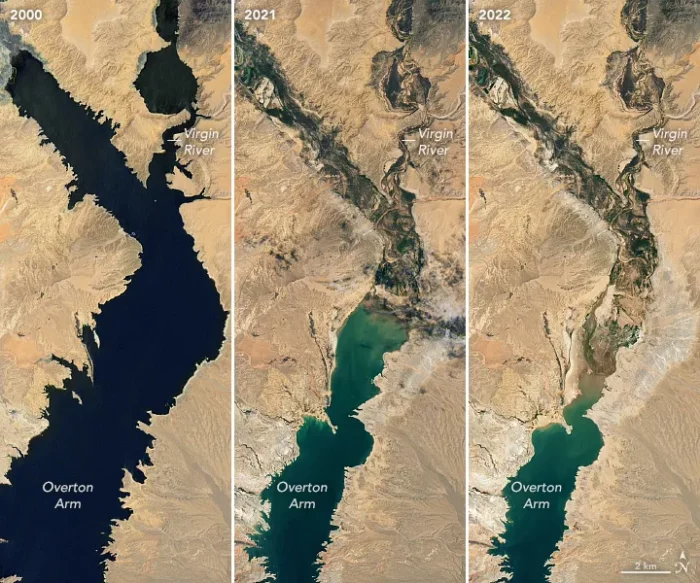
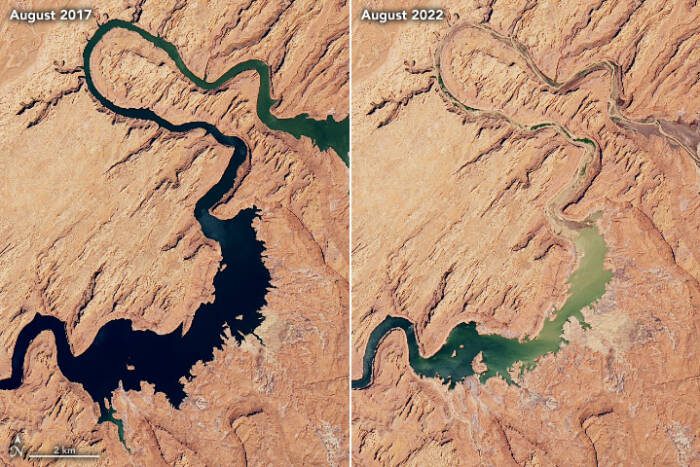
But wait, now with the record precipitation received in late 2022 and early 2023 the drought is over! Back to business as usual right? Unfortunately that is not the case. As Rhett Larson, an Arizona State University water law professor put it, “The drought is so critical that this recent rainfall is a little like finding a $20 bill when you have lost your job and you are being evicted from your house” (Miller 2023). We have a long way to go before we can even think about business as usual. What we need to be thinking about is the “new normal”, the best ways that we can conserve water, and how we can stabilize our own food systems. Our proposed solution is to go back to our roots, bring back the kitchen garden, and fight food insecurity in our own backyards.
Water Rules!

Water law in the west is extremely complicated and to be quite frank, even if you are able to understand it, it doesn’t make a whole lot of sense. The Colorado River Compact of 1922, which is the law that governs how the water of the west is divided, is a “first dibs” system and was flawed from its inception. This means that the states that were using the most water and had the highest populations in 1910 still hold the same share of water rights to this day (Weise & Hughes 2023). California’s population in 1910 was approximately 2.4 million (U.S. Census Bureau 2018). Compare that to over 39 million people in 2022 and it is easy to see where some of the problems arise (U.S. Census Bureau n.d.).
It doesn’t help that the compact was based on an average of 17.5 million acre-feet and since the year 2000 that average looks more like 12 million acre-feet (Weise & Hughes 2023). Despite these seemingly obvious issues, this compact has not changed in over 100 years. There are two main issues with this: populations in the arid west have skyrocketed since the compact’s creation and 80% of the Colorado River’s water is now being used for agricultural purposes (Weise & Hughes 2023).
Reduce Use

The Bureau of Reclamation asked the seven states within this compact to come up with a plan to reduce their water use from the river by between 2 to 4 million acre-feet per year (Weise & Hughes 2023). To put it in perspective, an acre-foot is approximately 326,000 gallons or the amount of water needed to cover one acre of land with one foot of water. In other words, these states are being asked to cut up to one trillion three hundred and four billion gallons of water that they are receiving from the Colorado River.
At the end of January 2023, six states submitted a plan to reduce use. This plan took into account evaporation rates and with California being the furthest west, they stood to lose a large share of their rights (Weise & Hughes 2023). As you can imagine California had some things to say. To put it in simple terms, they said “No. We were here first and we have seniority.” Without a consensus between all seven states the Bureau of Reclamation is left scratching their heads and trying to come up with alternatives. No matter how large and full the glass of water, someone is going to draw the short straw.
What can we do?
There have been a number of ideas proposed, such as pumping water from the mighty Mississippi River to the Colorado River. While physically possible, a project of this magnitude could take over 30 years to complete and could exacerbate other issues such as pollution, invasive species, and excessive nutrients that lead to algae blooms (Miller 2023).
The idea behind the Growing Dome was and still is “We can do more with less”. For us western folks, this can be done in a number of ways. First, we can say goodbye to the lush green lawns and hello to native species and xeriscaping. Secondly, and most important to us, we need to learn to grow our own food and not rely so heavily on industrial agriculture. Gardening is not just a hobby for the retired anymore. It is a necessity for all. While owning a Growing Dome sure makes this part easy, you don’t have to own a Dome to do this.
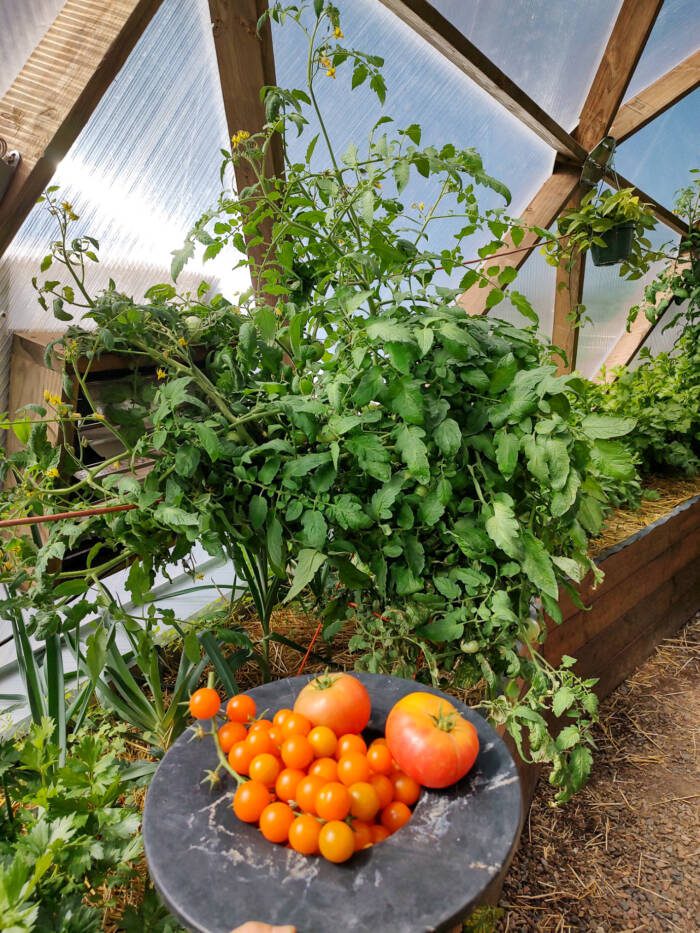
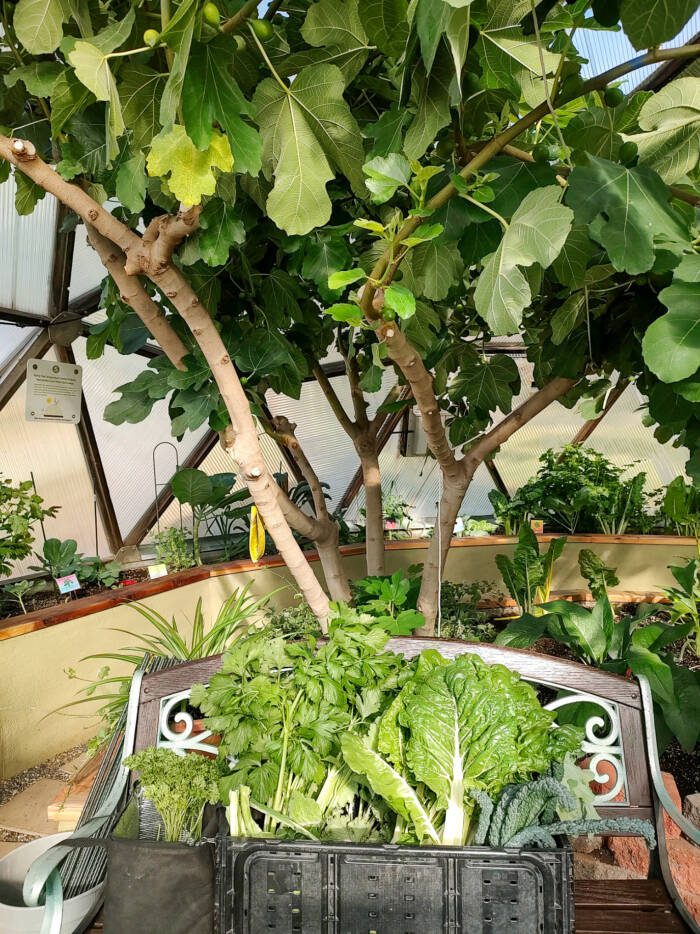
How can we do it?
I hear the apartment dwellers already, “That is not an option for me!” Well if there is a window, there is a way. Don’t have a sunny window? Try using a grow light. You don’t have to start growing stalks of corn or rows of wheat to make a difference. Start with some herbs, green onions, or lettuce. These crops don’t take up too much space, are relatively easy to grow, and you likely use them everyday. If you have a small outdoor space, like a balcony or patio, you can utilize a raised garden bed like this one from Backyard Boxes. Get together with your neighbors and see if they are growing anything. You might be able to create a co-op in your own apartment building.
Where a Growing Dome comes in to play
If you do have the space, a Growing Dome will allow you the peace of mind that your garden will last all year round. You don’t need to worry so much about the first frost nipping your cucumbers, or the deer eating your tomatoes that were just beginning to ripen, or those pesky groundhogs digging up your carrots again. If you have ever gardened outdoors, you know that these types of situations happen often and then you have wasted not only your time but the precious water you were trying so hard to conserve in the first place. Gardening in a greenhouse can actually help conserve water because you are not losing as much to evaporation, you are able to plant your crops closer together, and crop cycles are typically shortened (NID, n.d.).
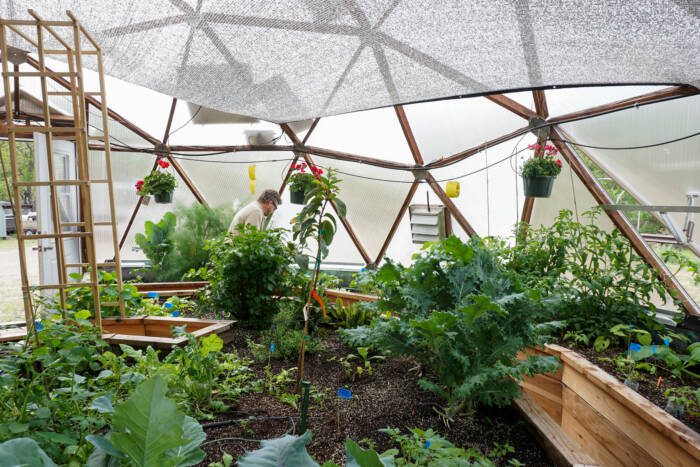
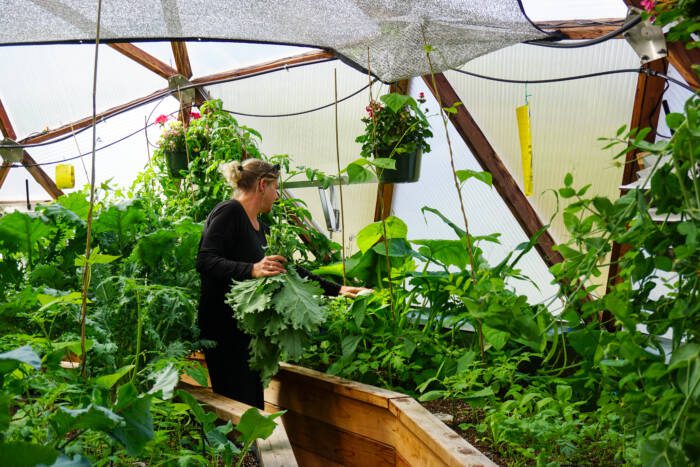
The Growing Dome has added benefits as the polycarbonate filters all UV light and ~40% of visible light from your greenhouse, giving your plants the right amount of sun while limiting evaporation. The addition of the above-ground pond also traps humidity in your Dome, allowing you to water less. Hand watering or spot watering only the crops or areas of the Dome that need it is going to be most efficient. However, we know that not everyone has the time to be watering everyday or multiple times a day so you can utilize a drip irrigation system. You will want to monitor the moisture levels of your soil for the first few weeks just to make sure you are not over watering.
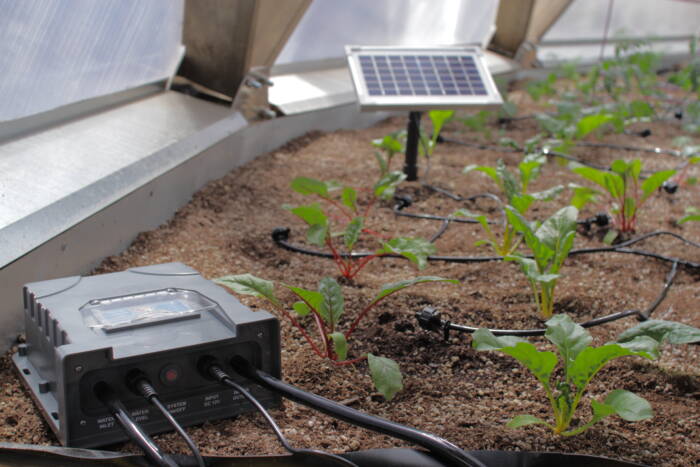

We aren’t trying to run around claiming that the sky is falling, but we would be doing you a disservice if we did not bring your attention to the changes happening that directly impact each and every one of us. We will persevere and we will find large-scale solutions to the water crisis in the west long-term. If we each do our part now, no matter how small it may seem, we can make a big difference to future generations – making the world a better place one gardener at a time. Here’s to a year of abundance, sustenance, and self-reliance.
Happy Growing!

Citations
Bagley, P. (2019). Colorado River Compact [Photograph]. The Salt Lake Tribune. Retrieved February 27, 2023, from https://www.sltrib.com/opinion/bagley/2019/01/23/bagley-cartoon-colorado/
Carpenter, D. (1922). The Colorado River Compact [Photograph]. Colorado Encyclopedia. Retrieved February 27, 2023, from https://coloradoencyclopedia.org/image/colorado-river-compact
Dauphin, L. (2022). Lake Mead Keeps Dropping [Photograph]. NASA Earth Observatory. Retrieved February 27, 2023, from https://earthobservatory.nasa.gov/images/150111/lake-mead-keeps-dropping
Miller, B. J. (2023, February 6). Is pumping Mississippi River water west a solution or pipe dream? The Colorado Sun. Retrieved February 6, 2023, from https://coloradosun.com/2023/02/06/pump-mississippi-river-water-to-colorado/
NID (n.d.). The Benefits of a Greenhouse for Water Sustainability. Nevada Irrigation District. Retrieved February 6, 2023, from https://www.nidwater.com/the-benefits-of-a-greenhouse-for-water-sustainability
USDA & FDA (2011, May 1). California Fact Sheet. United States Department of Agriculture. Retrieved February 6, 2023, from https://www.fsa.usda.gov/Internet/FSA_File/10cafacts_v3.pdf
Stevens, J. (2022). Lake Powell Still Shrinking [Photograph]. NASA Earth Observatory. Retrieved February 27, 2023, from https://earthobservatory.nasa.gov/images/150249/lake-powell-still-shrinking
U.S. Census Bureau (2018, January 1). Resident Population and Apportionment of the U.S. House of Representatives. Retrieved February 6, 2023, from https://www.census.gov/history/pdf/california_res_pop-jan2018.pdf
U.S. Census Bureau (n.d.). QuickFacts California. Retrieved February 6, 2023, from https://www.census.gov/quickfacts/CA
Weise, E., & Hughes, T. (2023, February 2). ‘Dead pool’ approaches: Western water crisis looms as California complicates critical water deal. USA Today. Retrieved February 6, 2023, from https://www.usatoday.com/story/news/2023/02/02/colorado-river-compact-water-crisis-california-plan-explained/11170739002/
